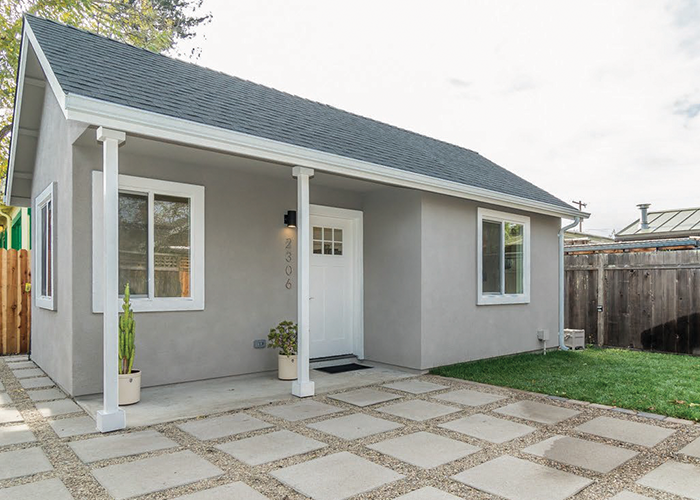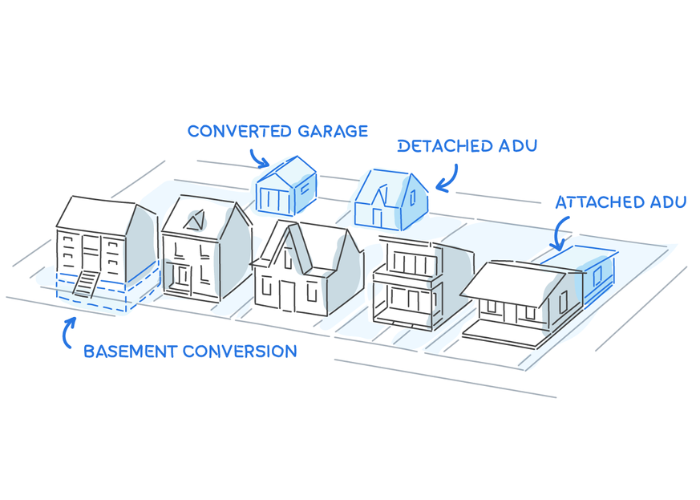Introduction to ADU Grants in California
In the state of California, accessory dwelling units (better known as ADUs) I’ve become an incredibly popular option to combat housing scarcity. ADUs are small business units located on the same property lot as a main dwelling. It is not uncommon for property owners to rent out these units.
Because of the housing and communal benefits offered by accessory dwelling units, the state of California has implemented grant programs as a means of promoting affordable housing. These grants help homeowners, developers and contractors to cover the costs associated with building the units. Here is information about the grant programs.
What Are California’s ADU Grant Programs?

California’s grant programs for accessory dwelling units are government initiatives to sponsor the construction or renovation of ADUs. The ultimate goal of this initiative is to alleviate the problems caused by the housing crisis currently afflicting California. These grants take the form of outright grants that do not need to be paid back, or favored loans which have lowered interest rates and in some cases deferred fees. These grants make it feasible for property owners to install ADUs on their property, and therefore alleviate the problems caused by the housing scarcity in the state.
Understanding Eligibility Requirements for California ADU Grants
There are certain criteria that applicants must meet if they wish to qualify for an ADU Grant in California. There are limits on income which are often set so that those with lower to moderate income households will be prioritized.
Homeowners and developers who are looking to construct multiple units on a larger scale can also apply for these grants. It is important that you understand the eligibility requirements to receive funding as if your application does not align with the intended goals of the grant then you may be deemed ineligible.
Detailed Income Criteria for Grant Qualification
The ADU grant programs are designed specifically to benefit those who are the most in need. Be eligible for a grant the applicant must be within a certain income bracket, typically set by the area median income adjusted for family size. Geographic location and the cost of living in different areas are factors that can severely impact the eligibility for the grant.
Types of ADUs Covered By the California Grant Program
It needs to be understood that the California ADU Grant Program caters to different types of accessory dwelling units in order to meet the diverse means of housing and property configuration. There are three primary types of ADUS that are used, and each type has its own advantage.
Detached ADUs
These units are standalone, meaning that they are separate from the primary residence on the property. This type of unit has the benefit of removing any feeling like the occupant is a resident in your primary home, allowing privacy for both you and the occupant.
Attached ADUs
These units are physically attached to the primary residence on the property. While it ill enable you to keep an eye on the condition of the unit, some may feel that an attached unit turns the occupant into a cohabitant instead.
Garage Conversions
These units are former garages that have been converted into a habitable living space. These options give homeowners flexibility to choose a unit that best suits their housing strategy and property type. However, some may feel that the occupant of this space is less of a tenant and more of a housemate, which may not be the ideal circumstance for many.
Understand that each unit type has its own associated costs, advantages, and disadvantages, so make sure that you plan accordingly when submitting your application.
The Application Process

Gather Information
You need to first understand the requirements of the grant program, including the eligible unit types and any criteria centered around income. Learn about any requirements or potential roadblocks that can prevent your eligibility for receiving the grant.
Documentation
Once you understand the requirements, you need to gather the proper documentation including proof of income, your plans for the unit, and proof of property ownership. Not having the right documents is a quick way to ensure that you do not receive grant approval.
Submission
Submit the now complete application to the proper designated state or local agency that handles the applications and fund disbursement. Make sure that you have paid careful attention to every detail to ensure that you have met all eligible criteria that all documentation is at work. If you find the process overwhelming then you can find workers at the agency you are applying through who will likely be able to help you navigate the process.
Funding Available and Limitations of the Grant Program
The maximum amount of funding allocated to applicants varies. The amount allocated is determined by several factors, including the applicant’s financial need paired with the costs of the project. There are, however, limitations and certain conditions to how the funds be utilized.
Any money must most commonly be applied towards construction costs, such as labor and materials and cannot be used for any unrelated expenses. Recipients may also be required to complete their unit on a set deadline and also comply with local building codes and zoning requirements.
Assessing the Benefits of Building an ADU
There are numerous personal benefits for homeowners to build a unit, including potential income gained through renting the unit as well as the unit increasing property value. ADUs are also beneficial because they help to alleviate some of the problems affecting the state of California caused by the current competitive housing market. This not only helps people be able to find affordable living spaces, it diversifies communities while also stabilizing them.
State and Local Agency Oversight of ADU Grants
State and local agencies are often responsible for setting the guidelines as well as processing grant applications while ensuring that the grant funds are used appropriately. Provide online resources, information workshops, and even direct support to applicants who may find the process fusing or overwhelming. Such oversight helps to ensure that the grants are used in a manner which achieves the intended goal of the ADU program.
Exploring Partnership Programs for ADU Financing
Sometimes the grant themselves are not quite enough to cover the full scope of a project. For this reason there are partnership programs between the government and private organizations. These collaborations are typically with non-profit organizations, housing agencies, and financial institutions which offer grants, loans, or matched funding. This increases the availability and access of funds for potential unit builders while simultaneously fostering community through diverse housing solutions.
Real-life Impact: Case Studies of Successful ADU Grant Recipients
If you wish to receive valuable insight into the practical benefits and challenges of ADU projects, the best thing you can do is learn about real life case studies of successful grant recipients. Such stories can give you an idea of how to navigate funding, regulatory hurdles, and construction of your unit. There is a wealth of knowledge to be gained from people who have gone through and completed the process that you are just beginning.
Understanding the Timeline for ADU Grant Reviews and Approvals
You need to have a realistic understanding of how long you can expect to wait for your grant review and approval to go through. The complexity of your application is a major factor and you must be willing to wait for several weeks up to even a few months for processing time. There is no way to truly expedite the process, however you can prevent the process from taking an excessively long time by making sure that your application is complete and completely accurate before submitting it. Make sure that you are adhering to the required specifications and that you are in consistent contact with the agency you applied through in order to address any problems in a timely manner.
Final Thoughts: Ensuring Qualification for a California ADU Grant
Remember, you need to thoroughly prepare and comply with all pertinent regulations when you apply for your ADU grant. You need to be sure that your income and project documentation is in order and accurate so that you do not jeopardize your eligibility.
Make sure that you are aware of local zoning laws. Make sure to remember to tap into any community resources that may be at your disposal and to reach out to any available guidance from local experts. By following these steps you can greatly improve your chances of securing not only your grant, but a professional ADU build, and on budget.
Sources
Here are some credible sources in APA style for your content on who qualifies for California ADU grants:
- California Housing Finance Agency. (2023). Accessory Dwelling Unit (ADU) Grant Program Termsheet. Retrieved from https://www.calhfa.ca.gov/homeownership/programs/termsheet-adu.pdf
- California Department of Housing and Community Development. (2024). Accessory Dwelling Units (ADU) and Junior Accessory Dwelling Units (JADUs). Retrieved from https://www.hcd.ca.gov
- California Department of Housing and Community Development. (2025). 2025 ADU Handbook Updates Webinar. Retrieved from https://hcd-ca-gov.zoom.us












